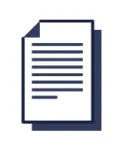| Titre : | Doping use among tertiary education students in six developed countries. (2006) |
| Auteurs : | PAPADOPOULOS (Fotios-C) : SWE. Department of Neuroscience. Psychiatry. Uppsala University Hospital. Uppsala. ; PARKKARI (Jari) : FIN. Medical School. University of Tampere. Tampere. ; PETRIDOU (Eleni) : USA. Department of Epidemiology. Harvard School of Public Health. Boston. ; Ilias SKALKIDIS ; "Sports Injuries" European Union Group. INC ; Athens University Medical School. Department of Hygiene and Epidemiology. Goudi Athens. GRC |
| Type de document : | Article |
| Dans : | European journal of epidemiology (vol. 21, n° 4, 2006) |
| Pagination : | 307-313 |
| Langues: | Anglais |
| Mots-clés : | Dopage ; Utilisation ; Enseignement supérieur ; Etudiant ; Homme ; Pays développé ; Comportement ; Médicament ; Activité physique ; Jeune adulte ; Prise de risque ; Epidémiologie |
| Résumé : | [BDSP. Notice produite par INIST-CNRS QR0xlUQR. Diffusion soumise à autorisation]. Data on doping among young non-professional athletes are scarce. In order to estimate the prevalence and predictors of doping use, a standardized, anonymous questionnaire was self-administered by 2650 tertiary education students from five European Union countries (Finland, France, Germany, Greece, Italy) and Israel. The reported usage rate of a doping agent (at least once) was 2.6%, with no significant variation in the frequency of doping reporting among the participating countries. Doping was, however, less common among students of biomedical schools (OR : 0.49,95% CI : 0.27-0.89) and was higher among males (OR : 2.16,95% CI : 1.25-3.74). Students, who use to drink coffee or recall frequent occasions of involvement in drunkenness episodes, were more likely (twice and three times, respectively) to report doping, and students using nutritional supplements or having participated in a major athletic event were more likely (four times and twice, respectively) to report doping in comparison with students who do not. Of note is the high odds ratio for reporting individual doping when having a friend who uses doping (OR : 8.61,95% CI : 4.49-16.53). Given the large size of the physically active young individuals in the population and the small number of professional athletes, doping in the general population may be, in absolute terms, as sizeable problem as it is among the professional athletes. There was evidence that high-risk behaviour and supplement use increased the risk of doping. |
Service Documentation EHESP
Me connecter
PORTAIL DOCUMENTAIRE
École des hautes études en santé publique
Catalogue
Multi-bases
Adresse
Service Documentation EHESPBibliothèque Rennes Avenue du Professeur Léon Bernard – CS 74312 – 35043 Rennes Cedex Bibliothèque MSSH Paris 20 avenue George Sand - 93210 La Plaine Saint-Denis
France
Bibliothèque Rennes : 02 99 02 29 50 Bibliothèque MSSH Paris : 02 99 02 24 50
contact


